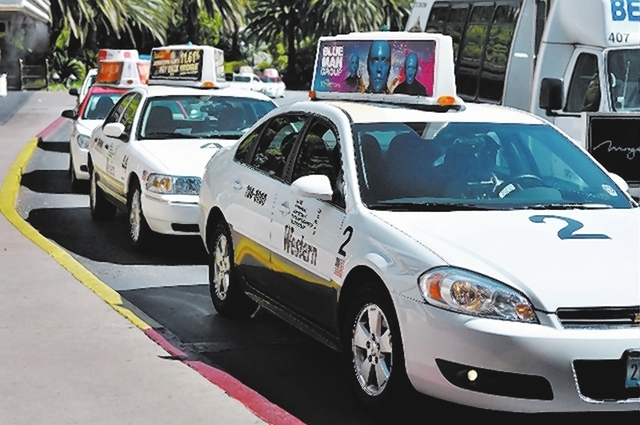HandiCab’s push for permits dies with court

The website mytaxistory.com still tells the story of HandiCab Ltd.’s quest to launch a taxi service oriented toward elderly and disabled people.
But company principal Tim Harney says this is probably wishful thinking now, after a Nevada Supreme Court ruling July 24 that extinguished an attempt to secure operating permits.
“There’s not much more we can do at this point,” said Tim Harney, one of the company’s three principals.
The nearly 20-year record of no new competitor entering the Las Vegas taxi market will remain intact, with no attempted startups even rumored ahead.
“I hope somebody else comes forward, but it won’t be us,” Harney said. “Someone must recognize how absurd this situation is.”
Under state law, each taxi must carry a metal plate called a medallion to pick up fare-paying passengers. The Nevada Taxicab Authority has issued 2,410 medallions to 16 brands, 10 of them owned by three companies, that come out to 2,044 full-time medallions after adjusting for time and day restrictions.
But Harney, who spent a quarter century in the Clark County School District and retired as assistant superintendent, and partners Phil Griffith and attorney Robert Martin found through sometimes direct experience that service for the elderly and disabled was spotty at best. Lengthy wait times happened frequently as cab drivers avoided these calls because they took longer and were frequently less lucrative than carrying tourists to Strip locations.
Harney spent years working with special needs students, Martin has three siblings with physical and mental impairments and Griffith lost a son to muscular dystrophy.
They applied in April 2007 for 40 medallions to start HandiCab, each of which would be for handicapped-equipped cars. However, the business plan estimated that only about 10 percent to 30 percent of the rides would fall into the handicapped category, with the rest involving regular customers. Restricting the clientele to the handicapped alone was not financially feasible.
They presented testimonials to back their case, including a couple of YouTube videos.
But that was no match for the other cab companies, which pounced on HandiCab as a camouflaged attempt to jump into the taxi business by evading the normal standards of issuing medallions only when needed to improve service to the public. This includes statistical calculations such as how many fares each driver picks up during a 12-hour shift.
Harney, however, compared this to building handicapped restrooms then forbidding anyone else from ever using them.
“We were willing to keep careful track of the rides we carried,” he said. “We promised to put a real premium on service to the disabled.”
The recession that staggered the visitor industry starting in 2008 also bit cab companies; passenger counts and revenues dropped. But by the time HandiCab’s application reached the authority in a June 2009 vote, the board members did not want to dilute business further by granting new medallions.
“The solution is not for the authority to add 40 unrestricted medallions in Clark County during the worst economic time since the Great Depression,” one brief submitted by the commonly owned Henderson and Whittlesea Blue cab brands read. “The solution, rather, is to respond appropriately to each complaint on a case-by-case basis and then work daily to improve service …”
Subsequent appeals to the Nevada Transportation Authority and Clark County District Court ran into dead ends for HandiCab before going to the Supreme Court in November 2011. After reviewing the procedure that the authority followed in denying the medallions, the Supreme Court concluded in a six-page ruling that HandiCab had received a fair hearing and upheld the decision.
However, Harney noted, the economic argument was undercut two years ago, when the authority created new medallions, some of them with restrictions, after industry lobbying.
“As a citizen, that is kind of disappointing, to tell the truth,” Harney said. “It’s pretty sad that there were 177 new medallions and none of them for the handicapped.”
The environmental consulting firm M.J. Bradley &Associates has produced a study that finds long-distance buses are cheaper to operate, more flexible and produce fewer emissions per passenger than Amtrak.
That shouldn’t come as a surprise, since the American Bus Association helped pay for the report. It comes as part of the industry effort, with Greyhound and MegaBus locally prominent, to persuade people that a bus can be a nice way to travel, not a last resort if you can’t afford something better.
The latest survey by the International Air Transport Association shows U.S. passenger counts rose 1.5 percent in July, a decline on the 1.9 percent rate for the year to date. Earlier this year, consumer interest was more robust before federal government spending cuts kicked in.
Nevertheless, international traffic rose 3.6 percent in July, attributed to rising consumer confidence. The report did not say why domestic and international travel seem to be subject to different influences.












